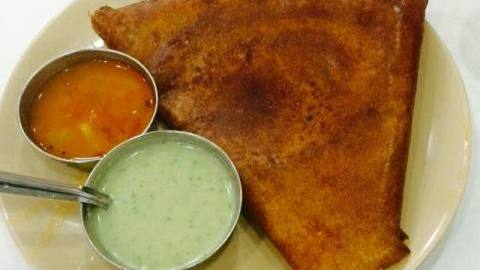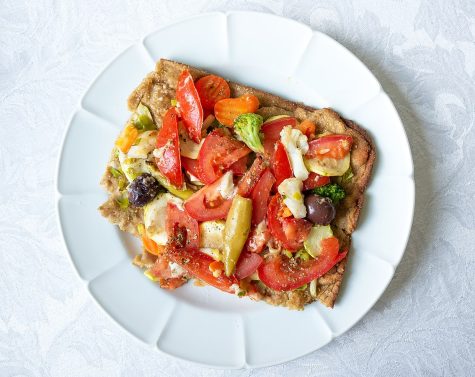A student’s guide to eating Indian

I stared at my plate. I was never afraid of food, but there was something about Indian cuisine that could intimidate. It was breakfast time and I had three traditional southern Indian food items: Idli, Vada and Dosa accompanied by a creamy white coconut sauce, or “chutney”, and a flavorful reddish broth-like substance filled with onions and vegetables. While fighting the urge to use my left hand (which is bad manners in Indian culture), I chased my food around my plate with my fingers—which started out as confusing and uncomfortable but became an intimate exploration of spices, texture and flavor.
When I chose Bangalore, India to study abroad this past winter, I knew food was a big part of the adventure. For three weeks I peeled apart Indian breads like “poori,” a deep fried wheat flour that looks like a puff, drank coffee with fresh cream and sipped freshly squeezed juices. Food became a way to try to connect with as much of the culture as I could. Here’s what I learned along the way and a few tips even if you don’t get the chance to travel to India:
1. Do your research
There was nothing more embarrassing for me than being in a restaurant talking to waiters and fumbling over what to order. Learning what to order or what you might want to try is as simple as typing it into Google. If you have food allergies or preferences, research is important to avoid illness or dissatisfaction with the menu. Sometimes restaurants have explanations of each dish, but you will save yourself time and maybe heartache by knowing a little background. Blogs like Kamala’s Corner are full of pictures, pronunciations and common names used to refer to traditional Indian dishes.
2. Know your tolerance for spice and stick to it!
I made the mistake of ordering chicken tikka masala with the assumption that it was a mildly spicy dish from what I had tasted in the U.S. I couldn’t have been more wrong. I ladled the thick creamy red sauce onto white rice without thinking that I should steady myself for the impact. After trying to relieve the spicy reverie in my mouth, I learned my lesson—Indian food is famous for it’s spicy kick and it’s better to ask a waiter to help gauge the level of spice. Asking questions can spare you from the eye watering and jaw dropping defeat delivered by cumin, coriander and chili pepper.
3. Don’t be shy, try something new
It’s easy to get comfortable and stray from ordering anything you can’t pronounce. A lot of the dishes I tried were vegetarian prepared with paneer, which is a cheese commonly used in south Indian food. It reminded me of tofu and all of my botched attempts at going vegetarian at home. Don’t let past experiences with food frighten you into submission. Order something you’ve never tried and share it with a friend. Even if you don’t like it, you won’t be too angry taking home a to-go box.
4. Good manners is mindfulness
This has everything to do with food, but also to do with being respectful. When you try foods from different countries, you’re also taking part in a piece of culture. I’ve had this experience abroad, but also at home where dinner dates have turned into embarrassing ranting and pouting sessions over what was ordered. Don’t spoil the experience with your attitude. Oftentimes, you can offend the host and come off as close-minded and rude. It’s OK to be up front about what you don’t like, but try to be discreet about expressing your disapproval.
5. Ditch your fork and spoon and use your hands
Indian culture taught me that eating is an experience best had when you can feel it with your hands. It took some getting used to and checking myself on ideas of civility or proper dining, but it was worth it. If you visit an authentic indian restaurant don’t be surprised if people are digging in with their hands. Western influence has socialized us to think that the proper way to dine is with a fork, but that isn’t always true. In parts of Asia, Africa and the Middle East hand-to-mouth eating is a part of an intimate connection with the culture.
[slideshow_deploy id=’9773′]
Here are some other great blogs for recipes and a restaurant to check out Indian cuisine:
India House Northampton– restaurant
Indiansimmer– blog
SailusFood-blog
Nia Decaille can be reached at ndecaill@umass.edu or follow her on Twitter @duhcaille.





